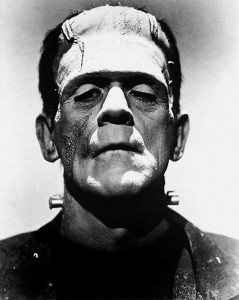CHICAGO — There’s an archetypal monster in your mind, and his name is Frankenstein. In a lecture presented this past Saturday, November 9, at the Chicago Humanities Festival, Heather Keenleyside discussed this notorious monster in relation to this year’s theme “Animal: What Makes Us Human?” Frankenstein, an example of “creation-gone-wrong” by mad fictional scientist Victor Frankenstein, both asks and answers this question. Now widely known through a wide range of cultural references —from multiple films to TV references and catchy monster-themed tunes — Frankenstein was born from the imagination of Mary Shelley.
“With an anxiety that almost amounted to agony, I collected the instruments of life around me, that I might infuse a spark of being into the lifeless thing that lay at my feet. It was already one in the morning; the rain pattered dismally against the panes, and my candle was nearly out, when, by the glimmer of the half-extinguished light, I saw the dull yellow eye of the creature open; it breathed hard, and a convulsive motion agitated its limbs,” writes Mary Shelley, describing the moment in which Victor Frankenstein fully identifies his creation. He realizes that this monster could ruin both his life and the lives of many more people. Shortly after this realization, the creator rushes out of the room. What to do now that this creature is alive and ready to do as it pleases?
Read the full story on Hyperallergic: http://hyperallergic.com/93413/who-is-the-real-monster-in-frankenstein/




